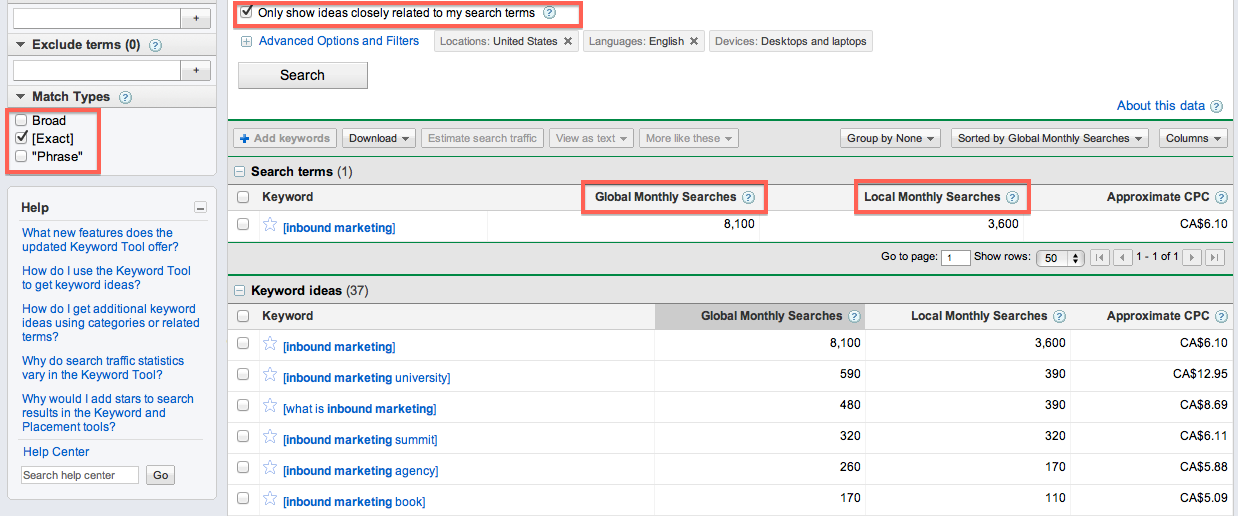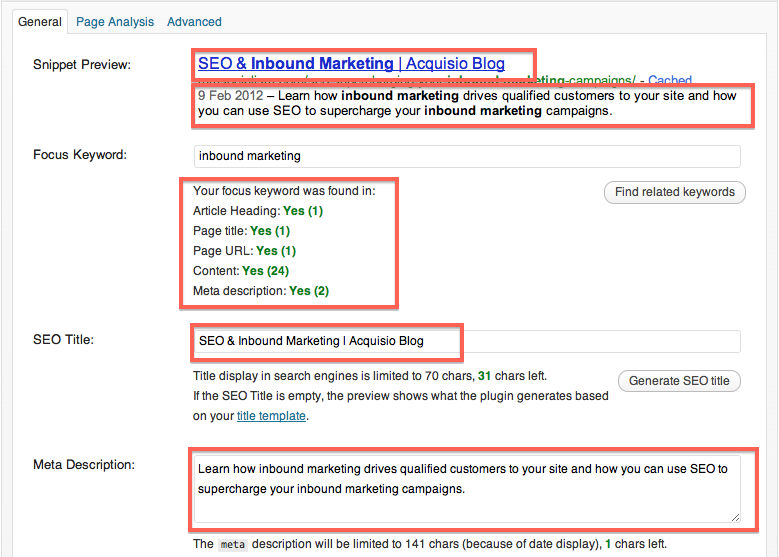 Magnetic Marketing
Magnetic Marketing
We spend a lot more time on this blog talking about “outbound marketing” rather than “inbound marketing”. Sure, we sometimes touch on how to sync the two, such as using PPC to find SEO opportunities and support SEO efforts, but even then we’re focusing on using “outbound marketing” to support or enhance “inbound marketing”. The focus is still on the outbound side of things. Well, what about planning a comprehensive and self-contained “inbound marketing” campaign from the get-go? In this post, we’re going to look at how to do just that, as well as how to infuse it with SEO every step of the way.
Inbound Marketing vs Outbound Marketing
Before we go any further, let’s get some things clear: the difference between inbound marketing and outbound marketing. In a nutshell:
- Inbound Marketing is about having customers find you
- and Outbound Marketing is about reaching out to and targeting customers
So while outbound marketing will include tactics such as PPC, print/TV ads, trade shows, email marketing and cold calling, inbound marketing involves producing content that users will find helpful/informative — such as blog, videos, white papers, etc. As Wikipedia puts it:
Inbound marketing is a marketing strategy that focuses on getting found by customers. This sense is related torelationship marketing and Seth Godin‘s idea of permission marketing. David Meerman Scott recommends[3] that marketers “earn their way in” (via publishing helpful information on a blog etc.) in contrast to outbound marketing where they used to have to “buy, beg, or bug their way in” (via paid advertisements, issuing press releases in the hope they get picked up by the trade press, or paying commissioned sales people, respectively).
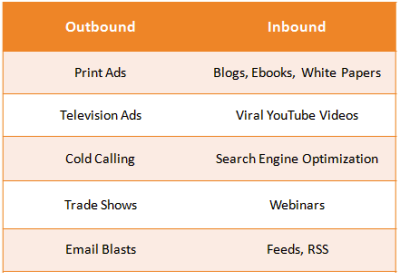 Credit: Hubspot
Credit: Hubspot
The theory goes that: because the content is helpful/informative, customers will go looking for the content, and when they find it, they’ll find you — and then might even share it with their network, which can be an added viral touch that helps their friends/family/colleagues find you, too. Looking over the definition, inbound marketing might strike you as something that’s much more “ethical” or “humane” than outbound marketing. After all, it ‘s “permission based” rather than “pushy” or “salesy”. It’s important, though, to remember that is has both its pros and its cons vis a vis outbound marketing.
The Pros & Cons of Inbound Marketing
Of course, inbound marketing has its cons or weaknesses or shortcoming. Unlike PPC, for example, where you pay for click and receive it almost immediately, inbound marketing is much more of a medium- to long-term strategy. If you’re planning an aggressive content strategy, whether it involves blogs, tutorials, or videos, it’s going to take time. First, one piece of content won’t be enough. You’ll need an entire archive of kick-ass content. Second, it’ll take time to put that content to the top of the SERPs. Now, even though inbound marketing is much more of a medium- to long-term strategy, like the old adage goes: “all good things come to those who wait.” In other words, the pros of inbound marketing mean that it’s worth both the investment and the wait. There are basically two pros to inbound marketing, and together, they grossly outweigh the cons.
Pro – Building Equity with Inbound Marketing
 Credit: Stone Glasgow
Credit: Stone Glasgow
With inbound marketing you “build equity” because you’re producing content that you’ll always have and that will continue to rank for a long time. Over time, your cost-per-click (CPC) will continue to drop as that content continues to rank and attract clicks long after you’ve produced it — whereas with PPC, your CPC is likely to remain constant (or even rise) over time as you pay for each and every click.
Pro – Intentional Targeting & Inbound Marketing
The biggest advantage that inbound marketing has over its outbound counterpart is “intentional targeting.” While you can’t target users by demographic, you are targeting them by interest and mood. When they find your content through search engines, they’re actively interested in it. They’re in the mindset for this kind of content, which means they are that much closer to a purchasing decision. For example, I can target you by interest, demographic and location through Facebook ads, but you don’t go on Facebook to shop, you go on Facebook to socialize. So as much as you might be interested in an industry, that doesn’t mean it’s time to hit you up. Conversely, if you type something into a search engine, you’re actively interested in that something and are seeking out more information on it. If I can provide that information, I can not only get you to my site, but also earn your trust, which will help me pull you further down the conversion funnel that you’ve already voluntarily entered. Paid search is probably the only form of outbound marketing that offers intentional targeting.
SEO & The Inbound Marketing Toolkit
There are many tactics in the inbound marketing toolkit, and they all relate to content – helpful, informative and/or entertaining content. SEO is part of that toolset because it helps users discover your products/services on their own, but it can also be applied to your other inbound marketing tools to maximize their results.
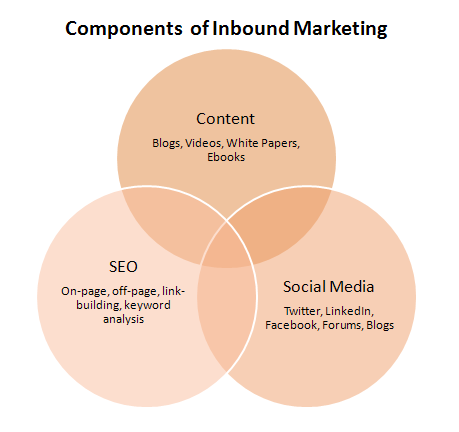 Credit: Hubspot
Credit: Hubspot
Starting with Keyword Research
If you’re going to bother SEO’ing different aspects of your inbound marketing, first you want to make sure that you’re targeting the right keywords. You might know what keywords best describe your products/services, but that doesn’t mean that everyone else does. In other words, users could be using so many variation on synonyms to find products/services that are similar to yours, and if you don’t know what those are, you’re going to miss out on a lot of traffic. If you really want to become intimately familiar with how to do keyword research, you should check out the keyword research chapter of SEOmoz’s Beginner’s Guide to SEO. For the most part, however, you can probably get by using the Google Adwords Keyword Tool and following these simple steps:
- Sign in (you’ll get more functionality this way)
- Type in a couple keyword variations related to a product/service
- Check the box for “
- Global Monthly Search Volume if you’re targeting international traffic
- Local Monthly Search Volume if you’re targeting only the Country you selected
- and Approximate CPC because this will give you an idea of what these keywords are worth to other players in the marketplace
SEO & Your Blog
Your blog will be the hub of your inbound marketing campaigns. Basically, no matter what kind of content you might produce, it’s going to be represented on the blog somehow. Either it’s a blog post, or a blog post plugging some other kind of content — whether it be a video, a whitepaper, or whatever. So while blogs are pretty good for SEO on their own, there are a few things you can do to get more out of them. These range from reducing duplicate content issues to optimizing different pages and individual posts.
 WordPress SEO by Yoast
WordPress SEO by Yoast
For starters, if you’re running WordPress, you’re probably going to want to get the WordPress SEO Plugin by Yoast. Plenty of premium WordPress themes have some advanced SEO features, but I’ve yet to see any plugin or theme that is as comprehensive as this one. Once it’s installed, you’ll want to use it to implement the following changes. Duplicate Content: So you know how you can sometimes find the same blog post on several category/tag pages? Well, to search engines, this looks like duplicate content and can reduce your chances of ranking. So first you make sure that all these pages (including the homepage) only show post excerpts. This way the full post only appears in one place. Then, using the WordPress SEO plugin, you make sure that all your author, date-based and tag archives are “noindex”. Basically, only your homepage, category pages and posts should be indexable. Category SEO: Remember how to do keyword research? Well, do it for each of your categories, and use it to write optimized Page Titles and Meta Descriptions for your category pages. If your theme doesn’t let you do this, the Wordpress SEO plugin will. This will help you rank your category pages for targeted keywords. Post SEO: If you don’t write a targeted Page Title and Meta Description for each post, Google will just grab your post title and the first 150-160 characters of your post. Not only might these not be that keyword relevant, but you’re missing out on crafting a strong call-to-action to get the user to click through from the search engine results page (SERP). The Wordpress SEO plugin by Yoast adds a really neat module below the HTML editor that allows you to do this on the fly. You simple put in the keyword you’re targeting and then the plugin will walk you through optimizing the post, from Page Title to content — complete with a preview of how it’ll appear in the SERPs
SEO Plugs for Other Inbound Marketing Content
Now that your content hub is properly SEO’d, you’re in a position to use it to more effectively promote your other content. White papers and ebooks, for example, are usually lead capture materials that can’t be accessed and indexed by search engines. But if you write a post plugging the page from where you can download said white paper or ebook, you now have two pages on your site that have a chance to rank for the relevant keywords.
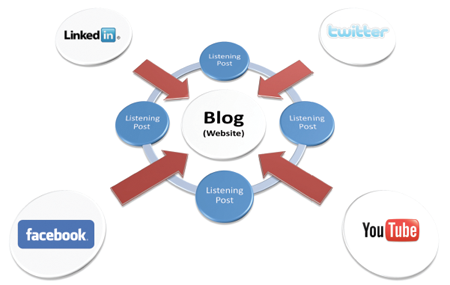 Credit: Business Casual Blog
Credit: Business Casual Blog
The same goes for videos. While your best chance of having your video found may be having it YouTube, post it on your blog through a post that’s been optimized will help that video get discovered. Basically, you’ll have a SEO’d post with more than just a description and some tags linking back to the original video. Having that keyword density surrounding a link that points to that page on YouTube will help ensure that a video result comes up on a normal web search. The same can be said for Twitter. When you tweet a piece of content, whether it be a blog post, video or white paper, be sure to include the relevant keywords as part of the text and hashtags of the tweet. Having a targeted keyword appear in a tweet will help that shortened URL pass a bit more relevancy on with the linkjuice.
Integrated Inbound Marketing Content
An important aspect of inbound marketing is that it’s different components come together to support each other. Content is promoted across several social channels, regardless from where it originates. Of all the inbound marketing tools, SEO is the one that holds relevancy over all the other — from blog posts to tweets to white papers. So when planning your inbound marketing campaigns, be sure to integrated SEO in the planning and implementation of all your other activities. IMAGE CREDITS

